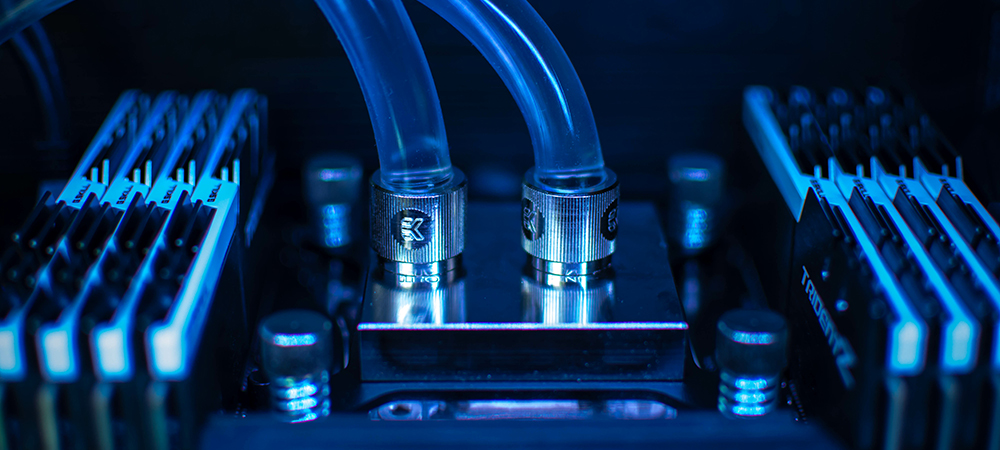Record-breaking heat waves are making headlines and straining economies around the globe, with no signs of cooling down in the immediate future. Beyond the impact on human lives, extreme heat is taking a major toll on data centre operations and infrastructure, from outages and disruptions at data centres in the UK, to reduced production at power plants in France, to concerns over water usage in drought-affected areas across the world. Vertiv, a global provider of critical digital infrastructure and continuity solutions, recently issued recommendations to data centre operators and associated businesses to help them navigate these challenges.
“If one thing is clear, it is that we need to be prepared for these extreme weather conditions to become more commonplace, so adapting to this inevitability is crucial,” said Karsten Winther, President for Vertiv in Europe, Middle East and Africa (EMEA). “Customers are becoming more aware of the challenges that extreme heat, for example, brings and are rightly looking at how they can mitigate the resulting risks when it comes to their data centre operations. Our service teams have proved invaluable in providing the guidance and support required to not only manage the immediate impact, but to discuss with customers how they can plan ahead to build in resiliency moving forward.”
To keep systems cool and help ensure data centre availability, Vertiv experts recommend these immediate actions:
- Depending on the data hall load, run as many units as possible to reduce the load on each cooling unit. Typically, an organisation would run all redundant units, but if the IT load is not 100%, one should run enough units to get the per-cooling unit as close as possible. This keeps the refrigerant pressures lower so there is not a risk of trips on high pressure with the high ambient temperature. It also provides a more efficient operating point.
- Schedule a regular maintenance plan. Vertiv recommends its customers schedule preventive maintenance quarterly. For compressor-based (DX) units, Vertiv recommends quarterly or more frequent cleaning of the condenser coils. The lack of proper and regular cleaning of the condenser coil can cause more of a reduction in the overall thermal unit capacity than the ambient temperature itself. Additionally, properly maintaining the refrigerant charge level helps to enable the design capacity and operating efficiency to function smoothly. A refrigerant charge that is too low or too high, can cause operational inefficiencies.
“The unprecedented temperatures we’re seeing across the globe are putting increased pressure on data centre operators and infrastructure providers, challenging them to maintain reliability and connectivity,” said Steve Madara, Vice President for Thermal Sales at Vertiv. “Extreme weather events underscore the importance of a robust preventive maintenance and cleaning plan, tailored to the specific conditions of an operator’s region. Data centre operators may need to be prepared for operating expense trade-offs to compensate for oversizing capacity. Partnering with a qualified data centre services provider is important in order to create a maintenance and services plan that will meet the demands of today’s heat waves and tomorrow’s uncertain climate.”
As the planet continues to warm and the climate crisis intensifies, extreme heat events will become even more commonplace. Short-term actions will need to be accompanied by more long-term, systemic changes in the industry.
We spoke to industry experts about how the UAE data centre industry will succeed in managing cooling requirements as global temperatures continue to rise…
Bjorn Viedge, General Manager at ALEC Data Center Solutions
According to some estimates, the Middle East data centre colocation market could grow by as much as 13.5% annually between 2020 and 2026. The United Arab Emirates is leading its regional peers in this growth. It has become one of the largest data centre hubs in the Middle East. Thanks to a sustained influx of hyperscale providers, the country is expected to see more than US$1 billion of investment by 2026 – a CAGR of just under 8% over the previous five years. In April this year, the UAE Cabinet initiated a strategy to nurture and boost the digital economy to the extent that it will contribute 20% of gross non-oil GDP in the coming years. The plan included the establishment of a council to oversee the progress of the digital economy. This programme will serve as yet another catalyst to accelerate data centre adoption.
Research has shown the mounting environmental impact of data centres. Demand for data centre services has driven them to get bigger, hotter and more expensive and a peer-reviewed study by Swedish researcher, Anders Andrae, predicts that the ICT industry could use 20% of all electricity and emit up to 5.5% of the world’s carbon emissions by 2025. And in a region that already faces a looming water crisis, Middle East data centre planners should be aware that today’s data centres use up an Olympic swimming pool every two days.
Given these challenges and the growing demand, it is imperative for the industry to develop socially responsible data centres. However, in the region and even globally, the vast majority of data centres have racks and white spaces which are air-cooled and this is definitely not the most efficient way of cooling. In the Middle East region this is even more pronounced given the extreme outdoor temperatures.
This is why at ALEC Data Centre Solutions we firmly believe in the immense value and need for liquid immersion cooling for data centres. Through our partnership with Submer, a leading innovator in advanced immersion cooling solutions for cloud and Edge Computing, we are primed to set new benchmarks in data centre energy efficiency with solutions that could help save up to 50% on CapEx building costs, up to 95% on cooling expenses and more than 90% savings on water usage for cooling purposes.
In addition to the sustainability benefits, liquid cooling will likely become a de facto standard. With computing equipment approaching the higher end of operating parameters and with chip densities continuing to increase, air cooling will no longer be feasible. We’re already seeing manufacturers such as Intel consider liquid cooling as an important part of new chipset designs. Often today it’s running nearer the top end of operating parameters, which is why liquid cooling solutions have been getting more traction, particularly at the higher end, with Intel now also considering liquid cooling as important for newer chipset designs.
Simon Bennett, CTO EMEA at Rackspace Technology
Demand for Internet and smart technologies is increasing rapidly. The International Energy Agency estimates that 1% of all global electricity is used by data centres and that by 2025, data centres will consume one-fifth of the world’s power supply. Much of the energy is used to power servers, but they in turn produce heat and need to be cooled which again requires a lot of energy. Data shows that energy consumption by cooling data centre IT equipment can be over 40% of total energy consumption.
With rising global temperatures, there is therefore a huge drive towards sustainability across the region, with many enterprises switching to hyperscale cloud providers, with a desire to be more environmentally conscious and due to limited interest in investing in data centre infrastructure as opposed to the more flexible offerings from cloud providers.
Shared resources can prove to be more energy efficient than many small data centres, each with their own power and cooling and often housing under-utilised equipment. We are also witnessing a shift in the type of equipment used in data centres. Thanks to various cooling and energy management techniques, including using liquid-based solutions instead of conventional air cooling, new equipment’s power and heat requirements play a vital part in energy reduction.
Traditional cooling strategies use chillers to cool the ambient air within a data centre. Most data centre operators have since switched to containment which isolates hot aisles and cold aisles from each other and prevents hot and cold air from mixing. Data centres with hot/cold aisles can help you save on your energy bills—as much as 50%.
Technology can help; intelligent cooling technology can reduce data centres’ power usage effectiveness (PUE) value by between 8% – 15%. For example, Abu Dhabi City Municipality constructed an intelligent modular data centre utilising advanced in-row cooling, close-coupled cooling and aisle containment technologies to reduce data centre PUE by more than 0.4, even in the hot UAE environment.
Data centres are increasingly turning more and more towards liquid cooling. When cooling high-density racks, liquid cooling can be up to 3,000 times more effective than utilising air because of the increased heat transfer qualities of water or other fluids.
Additionally, there is a chance to use extra heat from data centres to heat homes or public spaces like workplaces or swimming pools. According to the research group, Energy Innovation, the largest data centres produce over 100MW of energy, which is sufficient to power 80,000 houses.
The UAE has pledged to cut emissions as part of its global commitment to tackle climate change. The fast-growing technology industry can support this noble goal by taking steps to reduce energy consumption and switching to green IT.
Kamel Al-Tawil, Managing Director, Middle East and North Africa, Equinix
Climate change is one of the most critical challenges the world faces today. Various research and studies have confirmed that the average global temperatures have increased over time. This has been evident with countries across the globe experiencing heatwaves, wildfires, drought and scorching conditions, with many places recording temperatures hotter than in the Arabian Gulf.
The UAE is known for experiencing sweltering temperatures with dry and humid weather in the summer. This year in particular, the UAE has recorded its highest temperature this season attesting to the new climatic realities.
Just like sun exposure can have serious health consequences, working at high temperatures can reduce the reliability and durability of data centre components, which can lead to further complications further down the line. There are a variety of ways that data centres can make an environmentally positive impact. From indirect opportunities to influence the development of hosting platforms that can accurately combine weather forecasts, patterns of usage and demand, and capabilities such as load shedding, to specific actions including leveraging large, on-site energy storage solutions providing flexible, instantaneous power sources, or even utilising waste energy in the form of heat to displace local energy demand.
At Equinix, we are designing to future-proof sites and services to meet evolving environments.
Equinix has partnered with various organisations to develop and demonstrate low-environmental-impact fuel cells that provide economic and resilient prime power solutions for data centres. The project will integrate solid-oxide fuel cells (SOFC) with uninterruptible power supply (UPS) technology and Lithium-ion batteries to provide resilient and clean primary power to data centre deployments and other critical infrastructure.
Equinix data centres include physical barriers that help contain cold air in supply aisles (to keep data centre equipment cool and functioning properly) and hot air in exhaust aisles (to remove waste heat from the data centre as quickly as possible). By minimising the amount of air mixing between the cold and hot aisles, we can ensure the most efficient distribution of cooling air possible and therefore minimise the amount of power dedicated to cooling.
In the past, traditional air-cooling methods were sufficient to fully meet the cooling needs of the data centre industry. However, as technology has advanced, the hardware needed to support that technology has increased in power density. This means that air cooling alone may no longer be enough, particularly in the case of new power-dense technologies like Artificial Intelligence (AI). Liquid cooling technologies provide an attractive alternative and Equinix is investing in research, testing and ecosystem partnerships to drive adoption of liquid cooling methods across our data centre footprint.
Equinix is committed to becoming climate-neutral and has set a science-based target for emissions reduction across its global operations and supply chain by 2030.
Fouad Ibrahim, Director Infrastructure Planning and Design, Khazna Data Centers
The world is witnessing a rise in global temperatures that is certain to continue for decades to come. The shift in the weather condition is escalating impacts on economies, societies and industries — including the data centre sector that saves and secures the planet’s collective data.
The exponential growth of data has led to a massive increase in electrical power usage within data centres. Operators are seeking more energy efficient technological equipment to ensure optimum operation while minimising energy consumption. Cooling technology solutions are a key component of energy-efficient data centres.
Khazna Data Centers facilities are designed and built to be highly efficient, especially in the face of adverse weather conditions in the region. In Khazna’s new data centres, a revolutionary adiabatic free cooling chilled water technology is being used. In fact, a free-cooling chiller with an integrated adiabatic system design in a single unit can guarantee 100% cooling even in the harshest environmental conditions of ambient temperature peaks. Adiabatic free cooling chillers have a higher capacity in a smaller footprint, significant energy savings from using free cooling for a significant number of hours per year and low noise operation.
Khazna Data Centers cools its data halls using high-temperature water. A typical chilled water supply temperature would be 4-6°C; Khazna designs and operates chillers with water supply temperatures ranging from 20-22°C. This improves chiller efficiency, reduces losses and condensation in the chilled water system pipe network, as well as decrease power consumption.
Relying on pre-cooling and free-cooling whenever weather conditions allow contributes to less utilisation of chillers which results in less carbon emission. Free cooling of our water-cooled chillers as part of the current chilled water system is a highly efficient approach in the winter season. When external temperatures fall below 12°C, only cooling towers are employed to cool our data centres, eliminating the requirement for mechanical cooling (chillers’ compressors) by simply circulating water in the towers.
Khazna targets an annual average PUE less than 1.5 and better water usage efficiency. The cooling system and the critical electrical infrastructure are sized and specified to the best market efficiencies and technologies, while reducing any energy waste at partial loads VSD (variable speed drive) compressors, high efficiency UPSs, state-of-the-art centralised monitoring systems, high water temperature chilled water and lighting control technologies.
Indeed, driving down energy consumption, decreasing costs and employing advances in cooling and heat management technologies have shifted the way data centres are being designed, managed and maintained.
Click below to share this article

